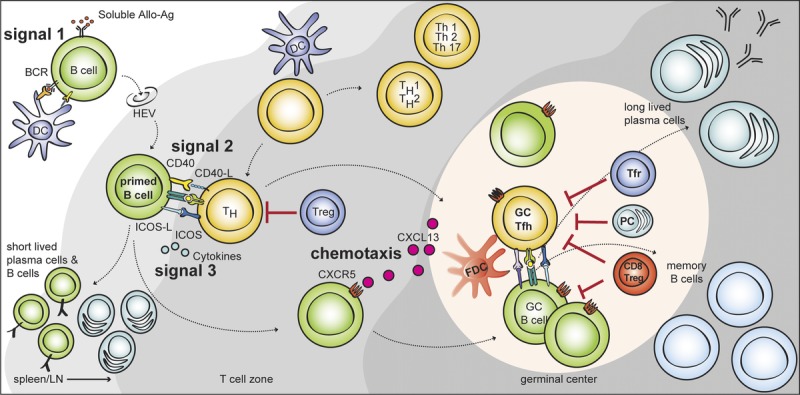FIGURE 1.

T cell–dependent B cell activation via multiple T-B interactions after allostimulation. Naive mature B cells are activated through BCR recognition (signal 1) and migrate to the T-B border via HEVs. Primed B cells receive further signals from costimulation (signal 2), and cytokines (signal 3) in the T-B border. Some activated CD4 T cells can acquire characteristics of Tfh cell lineage and migrate into the B cell follicle via CXCR5. These Tfh cells provide IL-21 and costimulation and induce the proliferation of cognate B cells, isotype switching, and somatic mutation. This massive B cell expansion and differentiation leads to the formation of hyperplastic GC in the B cell follicle. Tfr cells and CD8 Treg cells are thought to suppress this GC response either directly, by depleting B cells or indirectly by modulating Tfh cells. The GC response induces the differentiation of isotype-switched affinity mature B cells into memory B cells or into long-lived plasma cells. HEVs, high endothelial venules.
